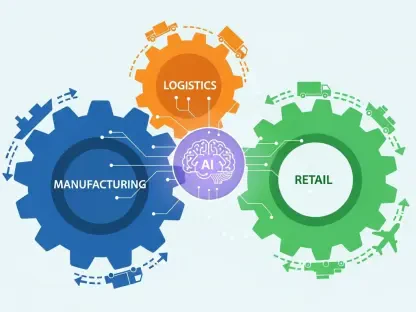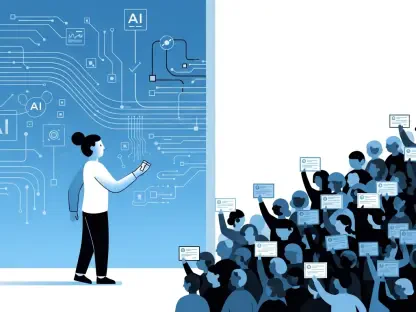Laurent Giraid, an esteemed technologist specializing in artificial intelligence, joins us today to discuss the rapidly evolving landscape of AI in productivity tools. With a keen focus on machine learning and natural language processing, as well as the ethical implications surrounding AI, he brings a critical perspective to the differing strategies of industry leaders like Microsoft and Google.
Can you explain the differing approaches Microsoft and Google are taking with AI agents in their productivity suites?
Both companies are leveraging AI to enhance productivity, but they are doing so in notably different ways. Microsoft is embracing a more segmented approach with their Copilot assistant, focusing on specific task automation through a plethora of specialized AI models within Microsoft 365. In contrast, Google has chosen to centralize its efforts around a large-language model, Gemini, which serves as the backbone for task automation and complex collaboration tools in Google Workspace.
How is Microsoft reshaping its Copilot assistant in M365?
Microsoft is transforming Copilot into a versatile series of tools designed to extract insights and automate tasks at both individual and organizational levels. This includes developing numerous specialized AI tools that cater to specific functions, such as HR and accounting, to streamline workflows and enhance efficiency.
What specific functions are Microsoft developing smaller AI models for?
Microsoft is concentrating on a diverse range of functions, employing smaller AI models to automate tasks within areas such as HR and accounting. This focus on specificity helps them enhance task efficiency by tailoring solutions to distinct needs.
What role does Google’s large-language model Gemini play in their Workspace?
Gemini is central to Google Workspace, providing the foundation for innovative tools. It allows the creation of simple, custom agents through Gems, helping employees automate tasks like customer service, and complex systems for broader workplace collaboration through Agentspace.
How do Google’s Gems and Agentspace contribute to their AI strategy?
Gems and Agentspace empower users to develop tailored solutions for specific tasks and collaborative efforts. By providing these resources, Google enables employees to generate both simple and complex AI-driven processes, reinforcing their cloud-based, collaborative ethos.
What are some recent features Google added at its developer conference?
At the latest Google I/O developer conference, a notable addition was real-time speech translation in Google Meet, expanding the scope of communication tools available within their suite and enhancing the global collaboration capability of Workspace users.
How do Microsoft’s and Google’s philosophical approaches to productivity differ?
Microsoft continues to capitalize on its traditional software strengths by maintaining desktop applications even as it transitions to cloud services. Google, however, has always embraced a cloud-first strategy, appealing particularly to smaller firms that prioritize real-time, online collaboration.
In what ways does Microsoft’s retention of desktop apps in M365 give it an advantage?
The retention of desktop applications provides Microsoft with an edge, as many enterprise users are deeply reliant on traditional software like Outlook and Word. This continuation allows them to seamlessly integrate AI capabilities across familiar interfaces, thereby building on established user workflows.
How are Microsoft’s and Google’s generative AI models performing relative to each other?
Currently, Google’s Gemini models reportedly hold an edge over Microsoft’s generative AI models. However, as Microsoft broadens its AI model library across its platforms, the competition remains dynamic and the standing could change.
What benefits does Microsoft’s integration with applications like Dynamics offer?
By integrating with platforms like Dynamics, Microsoft allows for richer, interconnected insights and automation across different enterprise tools, extending AI functionality beyond standard office applications into broader enterprise resource planning and CRM systems.
How does the adoption of Google’s A2A protocol affect interoperability between the two suites?
The adoption of Google’s A2A protocol by Microsoft fosters improved interoperability between the two suites, permitting users to exchange data and collaborate more freely, breaking down barriers that traditionally existed between different software ecosystems.
What challenges do Microsoft users face when considering a switch to Google Workspace?
Microsoft users often grapple with the complexities involved in migrating years of customized digital assets, such as Excel macros and pivot tables, to Google Workspace. These assets don’t seamlessly transfer, posing significant hurdles for users considering a switch.
Why is it too early to declare a leader between Microsoft and Google in the AI space?
Both companies are still in the developmental phase of their AI ecosystems, continually innovating and expanding their offerings. As both evolve, their relative strengths and leadership in the market remain fluid and difficult to definitively judge.
How is Google making inroads into larger organizations with its AI initiatives?
Google is attracting larger enterprises, especially those not bound by long-standing Microsoft commitments, by offering cutting-edge AI capabilities and transparent pricing models that appeal to the demands of modern business infrastructures.
What impact does the A2A technology have on the perception of Google Workspace?
The introduction of A2A technology has helped erase past perceptions of inferiority of Google Workspace, showing it as a competitive option alongside Microsoft by enhancing interoperability and facilitating a more integrated cloud environment.
How do the pricing structures for Microsoft’s Copilot and Google Workspace differ?
Microsoft’s pricing for Copilot is more variable, with business subscriptions available at tiered rates, while Google Workspace offers a more straightforward pricing model, starting with a flat rate that includes AI features like Gemini.
Why might the cost structure be a consideration for budget-constrained enterprises?
Enterprises with budget constraints may find Google’s more predictable and transparent pricing structure appealing, as it provides a clearer understanding of costs upfront compared to Microsoft’s tiered and usage-dependent billing approach.
Do you have any advice for our readers?
In navigating the choice between Microsoft and Google for AI-driven productivity, consider the unique needs of your organization, including your current technological investments and future growth plans. Understanding how each company’s tools could specifically serve your operational goals will be key in making an informed decision.









